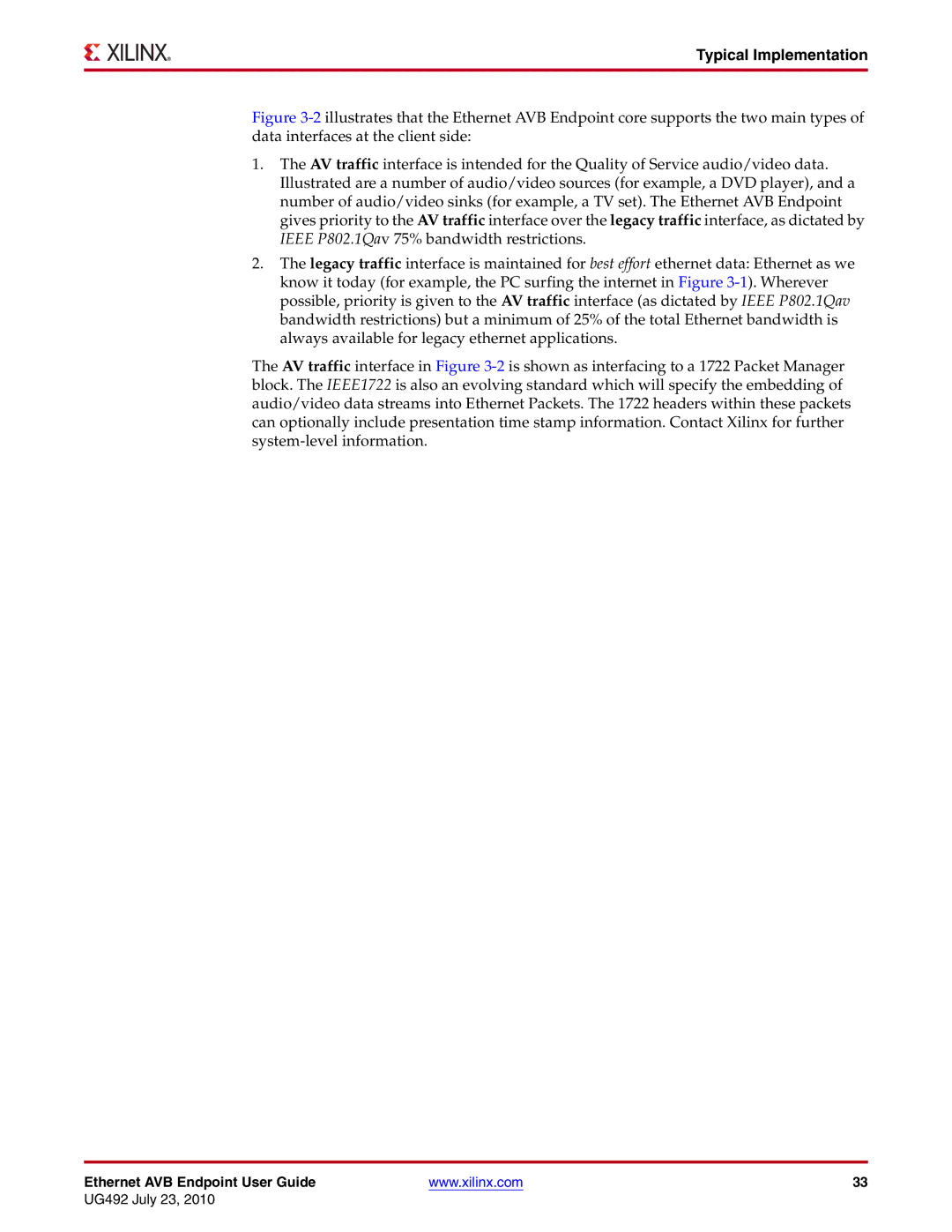
Typical Implementation
Figure 3-2 illustrates that the Ethernet AVB Endpoint core supports the two main types of data interfaces at the client side:
1.The AV traffic interface is intended for the Quality of Service audio/video data. Illustrated are a number of audio/video sources (for example, a DVD player), and a number of audio/video sinks (for example, a TV set). The Ethernet AVB Endpoint gives priority to the AV traffic interface over the legacy traffic interface, as dictated by IEEE P802.1Qav 75% bandwidth restrictions.
2.The legacy traffic interface is maintained for best effort ethernet data: Ethernet as we know it today (for example, the PC surfing the internet in Figure 3-1). Wherever possible, priority is given to the AV traffic interface (as dictated by IEEE P802.1Qav bandwidth restrictions) but a minimum of 25% of the total Ethernet bandwidth is always available for legacy ethernet applications.
The AV traffic interface in Figure 3-2 is shown as interfacing to a 1722 Packet Manager block. The IEEE1722 is also an evolving standard which will specify the embedding of audio/video data streams into Ethernet Packets. The 1722 headers within these packets can optionally include presentation time stamp information. Contact Xilinx for further system-level information.
Ethernet AVB Endpoint User Guide | www.xilinx.com | 33 |
UG492 July 23, 2010
